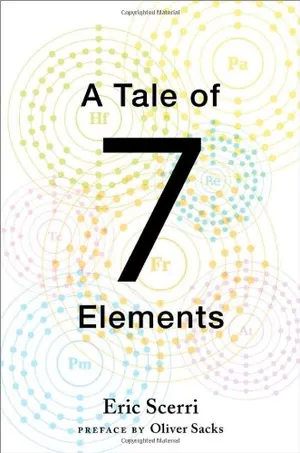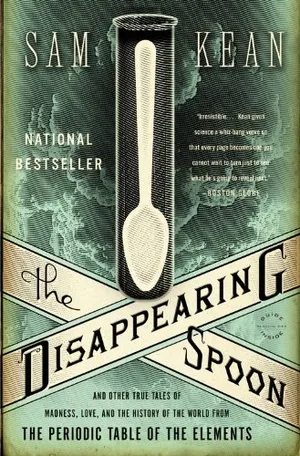When Will We Reach the End of the Periodic Table?
Even with new elements in hand, scientists are struggling to predict the future of the iconic chemical roadmap
/https://tf-cmsv2-smithsonianmag-media.s3.amazonaws.com/filer/c2/46/c2462773-d6aa-4d9e-8170-7a45248ff7bb/periodic-table.jpg)
Chemistry teachers recently had to update their classroom décor, with the announcement that scientists have confirmed the discovery of four new elements on the periodic table. The as-yet unnamed elements 113, 115, 117 and 118 filled in the remaining gaps at the bottom of the famous chart—a roadmap of matter’s building blocks that has successfully guided chemists for nearly a century and a half.
The official confirmation, granted by the International Union of Pure and Applied Chemistry (IUPAC), was years in the making, as these superheavy elements are highly unstable and tough to create. But scientists had strong reason to believe they existed, in part because the periodic table has been remarkably consistent so far. Efforts to conjure up elements 119 and 120, which would start a new row, are already underway.
But exactly how many more elements are out there remains one of chemistry’s most persistent mysteries, especially as our modern understanding of physics has revealed anomalies even in the established players.
“Cracks are beginning to show in the periodic table,” says Walter Loveland, a chemist at Oregon State University.
The modern incarnation of the periodic table organizes elements by rows based on atomic number—the number of protons in an atom's nucleus—and by columns based on the orbits of their outermost electrons, which in turn usually dictate their personalities. Soft metals that tend to react strongly with others, such as lithium and potassium, live in one column. Non-metallic reactive elements, like fluorine and iodine, inhabit another.
French geologist Alexandre-Émile Béguyer de Chancourtois was the first person to recognize that elements could be grouped in recurring patterns. He displayed the elements known in 1862, ordered by their weights, as a spiral wrapped around a cylinder (see the illustration below). Elements vertically in line with each other on this cylinder had similar characteristics.
But it was the organizational scheme created by Dmitri Mendeleev, a hot-tempered Russian who claimed to have seen groupings of elements in a dream, that stood the test of time. His 1871 periodic table wasn’t perfect; it predicted eight elements that do not exist, for instance. However, it also correctly foretold gallium (now used in lasers), germanium (now used in transistors) and other increasingly heavy elements.
The Mendeleev periodic table easily accepted a brand new column for the noble gases, such as helium, which had eluded detection until the end of the 19th century because of their proclivity to not react with other elements.
The modern periodic table has been more or less consistent with quantum physics, introduced in the 20th century to explain the behavior of subatomic particles like protons and electrons. In addition, the groupings have mostly held as heavier elements have been confirmed. Bohrium, the name given to element 107 after its discovery in 1981, fits so neatly with the other so-called transition metals that surround it, one of the researchers who discovered it proclaimed “bohrium is boring.”
But interesting times may lie ahead.
One open question concerns lanthanum and actinium, which have less in common with the other members of their respective groups than lutetium and lawrencium. IUPAC recently appointed a task force to look into this issue. Even helium, element 2, isn’t straightforward—an alternative version of the periodic table exists that places helium with beryllium and magnesium instead of its noble gas neighbors, based on the arrangements of all its electrons instead of only the outermost ones.
“There’s trouble at the beginning, middle and end of the periodic table,” says Eric Scerri, a historian in the chemistry department at the University of California, Los Angeles.
Einstein’s special theory of relativity, published decades after Mendeleev’s table, also introduced some chinks in the system. Relativity dictates that the mass of a particle increases with its speed. That can cause the negatively charged electrons orbiting the positively charged core of an atom to behave strangely, affecting the properties of an element.
Consider gold: The nucleus is packed with 79 positive protons, so to keep from falling inward, gold’s electrons have to whiz around at more than half the speed of light. That makes them more massive and pulls them into a tighter, lower-energy orbit. In this configuration, the electrons absorb blue light instead of reflecting it, giving wedding bands their distinctive gleam.
The notorious bongo-playing physicist Richard Feynman is said to have invoked relativity to predict the end of the periodic table at element 137. To Feynman, 137 was a “magic number”—it had popped up for no obvious reason elsewhere in physics. His calculations showed that electrons in elements beyond 137 would have to move faster than the speed of light, and thus violate the rules of relativity, to avoid crashing into the nucleus.

More recent calculations have since overturned that limit. Feynman treated the nucleus as a single point. Allow it to be a ball of particles, and the elements can keep going until about 173. Then all hell breaks loose. Atoms beyond this limit may exist but only as strange creatures capable of summoning electrons from empty space.
Relativity isn't the only problem. Positively charged protons repel each other, so the more you pack into a nucleus, the less stable it tends to be. Uranium, with an atomic number of 92, is the last element stable enough to occur naturally on Earth. Every element beyond it has a nucleus that falls apart quickly, and their half-lives—the time it takes for half of the material to decay—can be minutes, seconds or even split seconds.
Heavier, unstable elements may exist elsewhere in the universe, like inside dense neutron stars, but scientists can study them here only by smashing together lighter atoms to make heavier ones and then sifting through the decay chain.
“We really do not know what is the heaviest element that could exist,” says nuclear physicist Witold Nazarewicz of Michigan State University.
Theory predicts that there will be a point at which our lab-made nuclei won’t live long enough to form a proper atom. A radioactive nucleus that falls apart in less than ten trillionths of a second wouldn’t have time to gather electrons around itself and make a new element.
Still, many scientists expect islands of stability to exist further down the road, where superheavy elements have relatively long-lived nuclei. Loading up certain superheavy atoms with lots of extra neutrons could confer stability by preventing the proton-rich nuclei from deforming. Element 114, for instance, is expected to have a magically stable number of neutrons at 184. Elements 120 and 126 have also been predicted to have the potential to be more durable.
But some claims of superheavy stability have already fallen apart. In the late 1960s chemist Edward Anders proposed that xenon in a meteorite that fell onto Mexican soil had come from the breakdown of a mystery element between 112 and 119 that would be stable enough to occur in nature. After spending years narrowing his search, he ultimately retracted his hypothesis in the 1980s.
Predicting the potential stability of heavy elements isn’t easy. The calculations, which require tremendous computing power, haven’t been done for many of the known players. And even when they have, this is very new territory for nuclear physics, where even small changes in the inputs can have profound impacts on the expected results.
One thing is for certain: Making each new element is going to get harder, not only because shorter-lived atoms are harder to detect, but because making superheavies may require beams of atoms that are themselves radioactive. Whether or not there is an end to the periodic table, there may be an end to our ability for creating new ones.
“I think we’re a long way off from the end of the periodic table,” says Scerri. “The limiting factor right now seems to be human ingenuity.”
Editor's Note: Witold Nazarewicz's affiliation has been corrected.
Periodic Table Recommended Reading List

A Tale of Seven Elements
An authoritative account of the early history of the periodic table can be found in Eric Scerri’s A Tale of Seven Elements, which takes a deep dive into the controversies surrounding the discoveries of seven elements.

The Periodic Table
Readers with an interest in the Holocaust should pick up a copy of Primo Levi’s moving memoir, The Periodic Table. Also, for a compelling autobiography that uses the periodic table to frame the life of one of the world's most beloved neurologists, see Oliver Sacks’ New York Times op-ed "My Periodic Table."

The Disappearing Spoon: And Other True Tales of Madness, Love, and the History of the World from the Periodic Table of the Elements
Sam Kean takes his readers on a lively and chaotic romp through the elements in The Disappearing Spoon.

The Lost Elements: The Periodic Table's Shadow Side
Science enthusiasts interested in the insider baseball behind elements that never made it into the periodic table can check out the well-researched The Lost Elements by Marco Fontani, Mariagrazia Costa and Mary Virginia Orna.